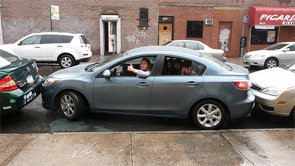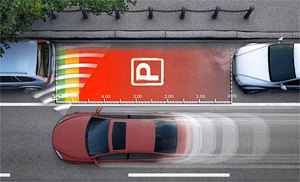Parallel parking is one driving maneuver that can make even veteran drivers crazy. In fact, many people just decide to avoid parallel parking at all costs. While this parking style seems tricky, it is actually not that complicated. Here are some tips that we think will help you master parallel parking and get over your fear of cramped spaces.

Not all parallel parking spots are created equal. Some spots are a tighter squeeze because the surrounding vehicles parked too close to the lines. Attempting to get into one of these spots is like failing before you even begin. Circle around the block if needed until you find a spot with plenty of space to get in and out of. You’ll need a spot that is at least 3 feet longer than the length of the vehicle you are in. Turn on your turn signal so that the vehicles behind you know what you are trying to do. Wait until there are no vehicles behind you before proceeding.
Positioning Your Car Properly

The key to successful parallel parking is making sure that your car is positioned correctly before you start. Pull up directly beside of the car in front of the space you want to park in. Make sure that there is 2 to 3 feet of space between it and your car. If you pull up too close, you may scrape the other car as you attempt to park. Put the car into reverse and slowly back straight up until your rear wheel is even with the bumper of the other car.
Making the Turn
Keep your foot on the brake and turn your steering wheel toward the curb until you can’t turn it any more. Take your foot off of the brake and slowly begin backing into the spot. Continue backing up slowly until your car is at a 45 degree angle with the curb, then stop. Turn the steering wheel all the way to the left and continue slowly backing into the spot. Check your side and rear view mirrors frequently throughout the process to ensure that you don’t hit another vehicle, a pedestrian or a parking meter. Once you are in the spot, examine how much space is in the front and rear of your vehicle. If there is less than 3 feet of space in either location, pull forward or continue backing until there is sufficient space.

The information in this article was obtained from various sources. This content is offered for educational purposes only and does not represent contractual agreements, nor is it intended to replace manuals or instructions provided by the manufacturer or the advice of a qualified professional. The definitions, terms and coverage in a given policy may be different than those suggested here and such policy will be governed by the language contained therein. No warranty or appropriateness for a specific purpose is expressed or implied.



